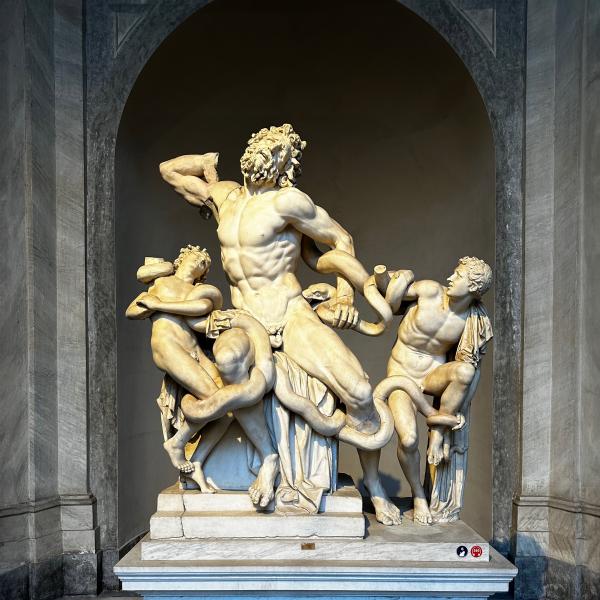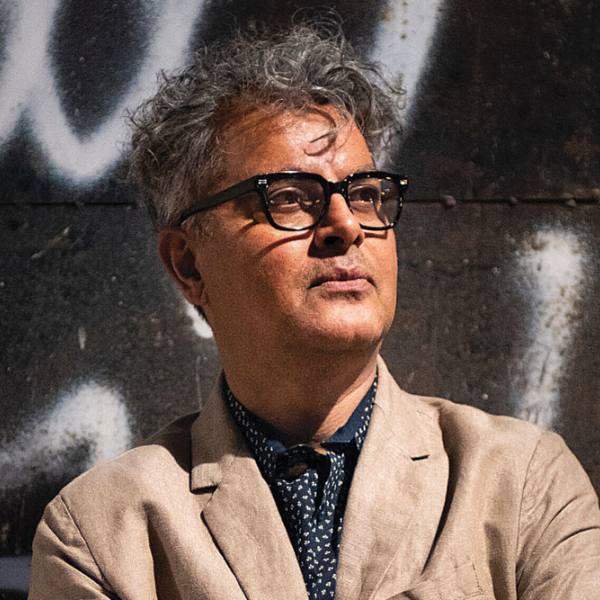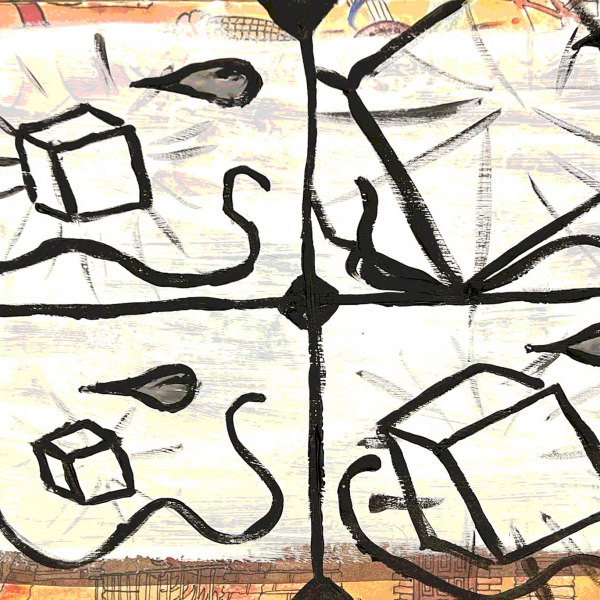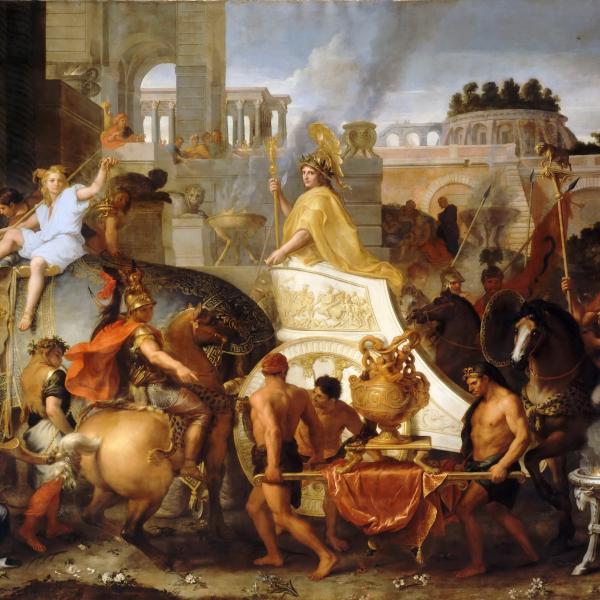Diane Wei Lewis
Assistant Professor of Film and Media Studies
The 34th annual Pordenone Giornate del Cinema Muto, the Pordenone Silent Film Festival, was held October 3–11 this year. The festival was originally established as a three-day event in 1982. Since then, it has grown to become the most important venue in the world for enjoying rarely screened archival prints of silent-era films, new film restorations and live musical accompaniment for silent film.
This year’s Giornate included nearly 100 hours of programming, including a small number of contemporary documentaries and new releases. The silent films originated from 16 countries and spanned 37 years of silent filmmaking. This year’s program included one-shot films of little more than 20 seconds, as well as several multipart features that were many hours long.
This year’s shortest film was a “trick film,” or magic film, by the French film company Pathè called Le Repas infernal (The Infernal Meal, 1900–01, 23 sec.). Le Repas infernal screened as part of a 73-minute program of early cinema shorts from the collection of Spanish exhibitor Antonio Sagarmínaga (page 42 in link). The collection gives film historians an idea of what kinds of films were exhibited in Spain — and in particular, in Bilbao — around the years 1897 to 1907. The films were shown in the order that they had been spliced together by Sagarmínaga on exhibition reels organized by subject: current events in Spain, rural scenes, seaside scenes, sports, comedies, trick films, miscellany and more.
In order to create a restoration print that could be screened for today’s audiences, original elements from the Sagarmínaga collection were repaired and duplicated and, when necessary, combined with duplicates from original negatives of the same films obtained from other sources. When making the final print from these various elements, the Madrid-based Fotofilm-Deluxe lab reintroduced the original color tint found in many of Sagarmínaga’s films

The Giornate’s longest film this year was a recent restoration of French director Henri Fescourt’s Les Misérables, a 1925 adaptation of Victor Hugo’s magnum opus. This stunning color digital restoration was carried out by the Centre National du Cinéma in collaboration with the Cinémathèque de Toulouse, with assistance from Pathé and the Foundation Jérôme Seydoux-Pathé. Fescourt’s epic film is divided into four parts: Jean Valjean, Fontine, Marius and L’Epopée de la rue Saint-Denis. All together, the four-part screening of Les Misérables was 397 minutes long. It began in the afternoon, and was accompanied continuously by world-renowned silent-film accompanist Neil Brand.
In Les Misérables, Fescourt skillfully combines suspenseful predicaments, highly expressive lighting, memorable landscapes, moving performances and poetic shot-sequences, condensing Hugo’s literary descriptions into stark and forceful imagery. Low-key effects lighting is used in key scenes, most memorably to depict Jean Valjean’s emotional turmoil as he struggles with temptation just after his release from prison. On his first night as a free man, Valjean accepts lodging with a saintly bishop but suspects the clergyman’s motives. As Valjean goes to his room, strong directional lighting creates dramatic, expressionist shadows trailing after Valjean, suggesting the darkness in his soul. Later that night, he plots to kill and rob the sleeping bishop. The shadow of his dagger, cast by dim light coming through the bedroom window, hangs menacingly on the bedroom wall. However, just before Valjean can strike, the clouds slide apart to expose the full moon. The moon illuminates a cross above the bishop’s bed, causing Valjean to falter and saving the bishop’s life.
 There were many other festival highlights. In the “Italian Muscle” series, beefcake leading man Luciano Albertini displayed his athletic prowess in gasp-inducing stunts for the action crime film Rinaldo Rinaldini (Max Obal, Germany, 1927). Carlo Aldini played an anguished, supple-bodied Achilles in the nearly four-hour sword-and-sandal epic Helena (Manfred Noa, Germany, 1924).
There were many other festival highlights. In the “Italian Muscle” series, beefcake leading man Luciano Albertini displayed his athletic prowess in gasp-inducing stunts for the action crime film Rinaldo Rinaldini (Max Obal, Germany, 1927). Carlo Aldini played an anguished, supple-bodied Achilles in the nearly four-hour sword-and-sandal epic Helena (Manfred Noa, Germany, 1924).
A Bert Williams retrospective surveyed the films of this important Caribbean-born African-American actor, recording artist and film director. Williams was one of the last African-American blackface performers, and his films are a visual record of some of the texts, performance styles and stars associated with turn-of-the-century black theater.
The series “Russian Laughter” presented rollicking comedies and wry satires from the Soviet period. In the film short Wake Up Lenochka (Antonina Kudriavtseva, 1934), an athletic and sprightly girl resists being woken from surreal dreams of adventure. Her resourceful attempts to get to school on time are even more fantastic than her dreams. Another short, A Bell-Ringer’s Film Career (Nikolai Verkhovskii, 1927), poked fun at silent-era Soviet filmmaking conventions such as typage (the practice of casting nonprofessional actors in motion pictures to create a heightened sense of realism).
The National Film Center of Japan presented a new reconstruction of the Japanese period film Chuji’s Travel Diary (Ito Daisuke, 1927). The screening featured live benshi narration with Japanese instrumental accompaniment.
A silent-film retrospective of Victor Fleming, best known for directing Gone with the Wind (1939), included the early Clara Bow film Mantrap (U.S., 1926) and a sizzling Western called Wolf Song (U.S., 1929) starring Gary Cooper and Lupe Velez.
Cooper plays a wild, rambling man-cub of a cowboy who steals Velez’s heart. They elope, but the call of the trail is ultimately too strong for Cooper to resist. Velez pleads with him to stay, hotly warning him that if he leaves her, he can never come back. Cooper eventually does turn his horse back toward home, but he is ambushed by hostile Indians before he reaches Velez.
 This pre–Hays Code Hollywood production includes some reclining kissing and heavy breathing, as well as strategically placed bushes for Cooper’s all-nude river-bathing scene. The film clearly demonstrates that not only actresses, but also many male stars, were displayed as erotic objects for the audience’s visual pleasure in Hollywood studio films. In Wolf Song, both male and female characters view Gary Cooper with wondrous admiration and desire. Lupe Velez, passionate and grounded, is a force to be reckoned with!
This pre–Hays Code Hollywood production includes some reclining kissing and heavy breathing, as well as strategically placed bushes for Cooper’s all-nude river-bathing scene. The film clearly demonstrates that not only actresses, but also many male stars, were displayed as erotic objects for the audience’s visual pleasure in Hollywood studio films. In Wolf Song, both male and female characters view Gary Cooper with wondrous admiration and desire. Lupe Velez, passionate and grounded, is a force to be reckoned with!
This post is just a sampling of the programming featured at the 2015 Giornate. Other programs featured Latin American cinema, the early western and more.
The festival welcomes a new director, Jay Weissberg, who is working with director emeritus David Robinson to curate next year’s films. Mark your calendar: the 35th Pordenone Silent Film Festival will be held October 1–8, 2016!




